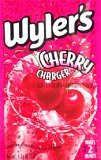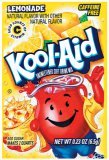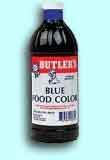| product | colorings | |
|---|
| Yellow Food Color | tartrazine (FD&C yellow #5) and
allura red (FD&C red#40) | water, propylene glycol, and propylparaben as a preservative |
| Blue Food Color | brilliant blue FCF (FD&C blue #1) and allura red (FD&C red #40) | water, propylene glycol, and propylparaben as a preservative |
| Green Food Color | tartrazine (FD&C yellow #5) and brilliant blue FCF (FD&C blue #1) | water, propylene glycol, and propylparaben as a preservative |
| Red Food Color | allura red (FD&C red #40) and erythrosine (FD&C red#3) | water, propylene glycol, and propylparaben as a preservative |
| product | colorings | |
|---|
| "Blastin' Berry Cherry"® | allura red (FD&C red#40) | citric acid, calcium phosphate, modified cornstarch, artificial flavor, ascorbic acid, natural flavor |
| lemonade flavor | tartrazine (FD&C yellow#5), "artificial color"*, tartrazine lake (FD&C yellow#5 lake) | citric acid, calcium phosphate, maltodextrin, salt, natural flavor, lemon juice solids, ascorbic acid, BHA |
| strawberry | allura red (FD&C red#40) | citric acid, salt, maltodextrin, calcium phosphate, ascorbic acid, artificial flavor |
| "Blue Moon Berry"® | brilliant blue FCF (FD&C blue #1) | citric acid, calcium phosphate, maltodextrin, ascorbic acid, artificial flavor, natural flavor, tocopherol |
| orange | tartrazine (FD&C yellow#5), "artificial color"*, allura red (FD&C red#40), allura red lake (FD&C red#40 lake) | citric acid, maltodextrin, salt, calcium phosphate, natural flavor, ascorbic acid, artificial flavor, BHA |
| grape | allura red (FD&C red#40), brilliant blue FCF (FD&C blue #1) | citric acid, calcium phosphate, salt, maltodextrin, modified cornstarch, artificial flavor, ascorbic acid |




